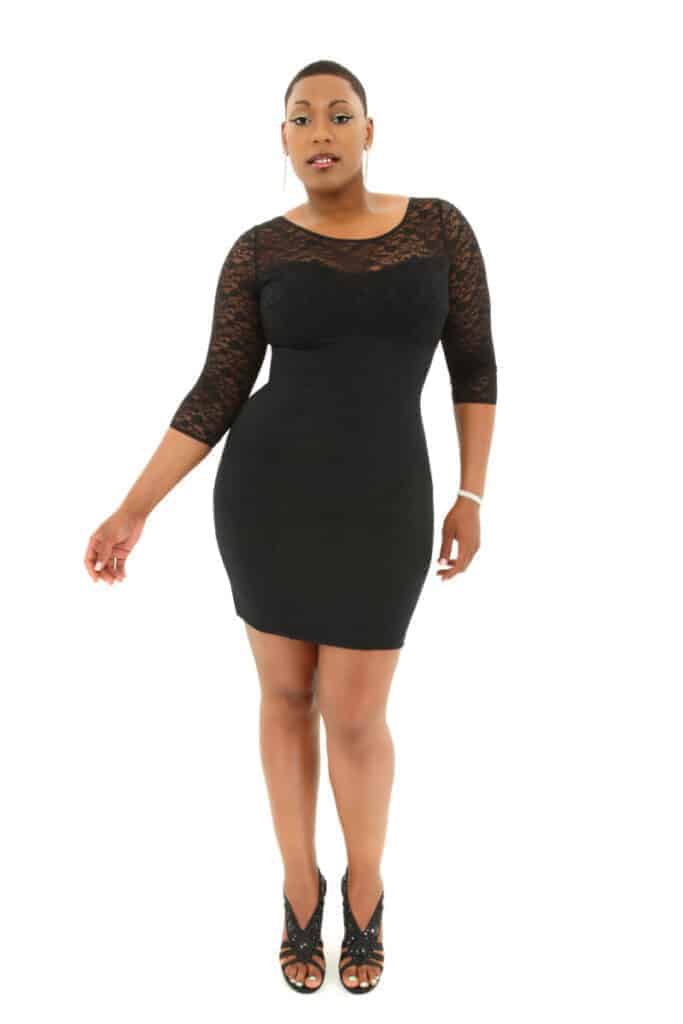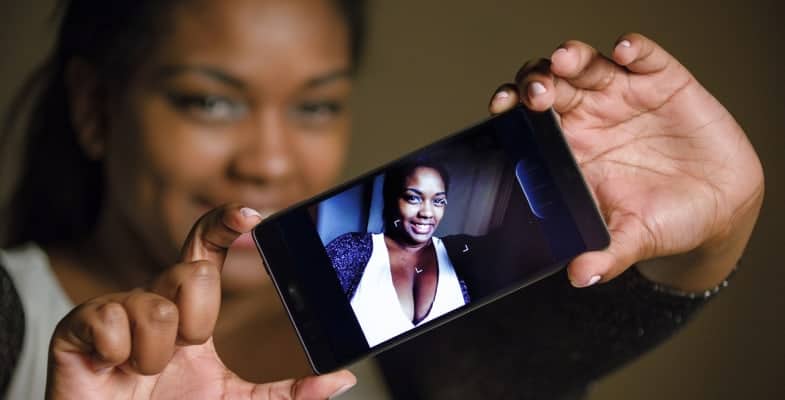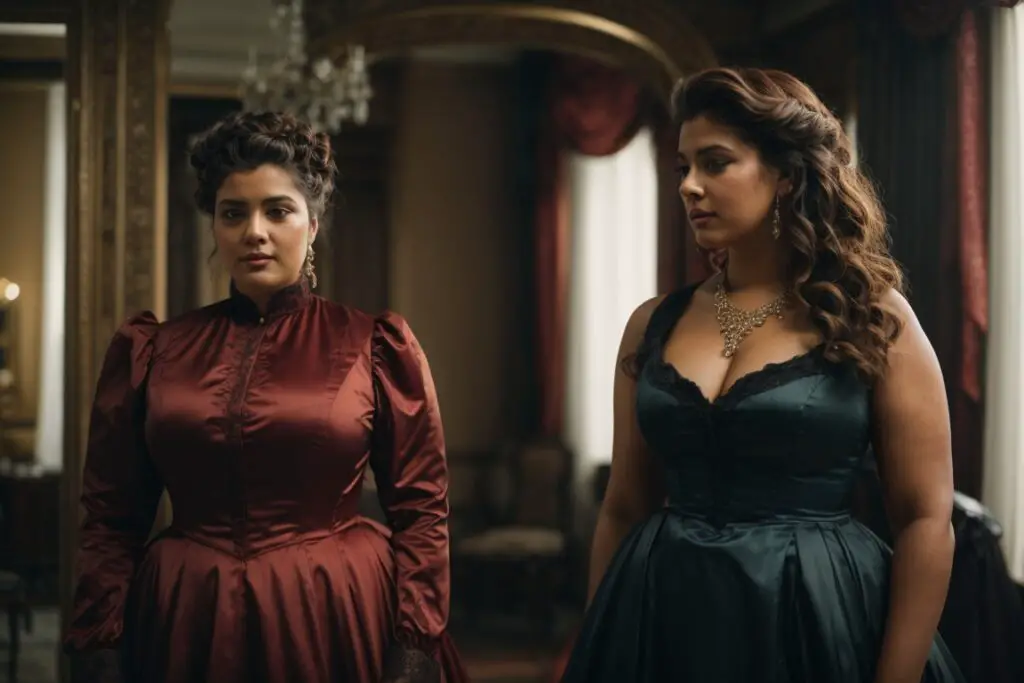The female body shape has and continues to be a relentless debate especially when it comes to defining plus size vs full-figured bodies. New perspectives are sprouting by the day as old rigid ones evolve to take on fresh meanings. It’s one of those topics difficult to place a finger on what is and is not.
A lot of times these two terminologies are used interchangeably and may appear to be synonyms of each other. On one side this is arguably true judging from anecdotal evidence that gravitates towards individualistic ideologies. This suggests that a woman has every right to define her image simply because she understands her body best. On the other hand, stakeholders within the fashion industry seem to have arrived at a dividing line – which supposedly means that the two words are worlds apart.
Essentially, both parties have their facts right which is why this subject remains to be a paradox. We are lurking in murky waters but none the less, one agreeable factor stands out and that is the need to appreciate diversity in whatever form it comes in. Not in any way tread down or discriminate a particular body type.
That said, as we endeavor to demystify this puzzle, consequently, we must also shed light on implied meanings when using the word “plus-size”. Is it harmless or offensive? Should it be replaced by more acceptable references? How is the media and clothing industry contributing to how women get to view themselves? All this and more details on the matter! I’m just as curious as you are, so for a start, let’s take a look at some underlying differences.
Specifics of the Plus Size Body
Now that we live in a world heavily steered by fashion trends, it only makes sense to use this reference as a baseline for this discussion. So what is a plus-size body? From what size are you regarded as plus-size?
According to fashion experts, a plus woman typically weighs more than the average body. She is no stranger to excess body fat amounts, lumps, and sorry to say, fits in the obese category. This is generally what depicts a heavy body, nevertheless, I have to emphasize that this is not laid on stone because again, how much is excess?
She may also have an overall rounded frame with a non-narrow waistline. Because of the cumulative weight, her features are larger. Areas like the stomach could hang lower than usual, her chest and butt are generally bigger, and maybe without a sculptured form or proportion.

Over the past, researchers have argued that a plus-size body does not necessarily connote unwholesome living. Consequent health studies reveal that it is not unusual to have a seemingly larger body size while still actualizing a healthy lifestyle and balanced eating routines. Some of the sizes we quickly assume to be plus have to do with genetic traits. So in other words, it is safe to say that going past certain scale measurements may not equate to being overweight.
In light of size measurements, particularly alluding to the modeling industry, a girl is considered plus from a size 8 and above. However, normally, retailers fit their small-sized items from a size 00 up to a 10, 12 thereabout. Bigger sized clothes averagely begin from a size 14-26, with other brands extending up to a 32.
Specifics of the Full-figured Body
Just like the plus figure, a full-figured woman equally has larger body features, the only difference being that she is more voluptuous. Sometimes the full figure is described as an hourglass figure which is characterized by a thick silhouette and a narrower waistline.
Essentially, her structure takes to a generously endowed butt and chest, broadened hips and thighs as well as shapely legs. A flat stomach is also another common trait with such women but there equally is a handful lacking in this feature, yet still come off as full-figured shapes.

According to the Leaf, a full-figured woman is one that wears a size 12 and above. Her overall size does not constitute “fat” per se, instead, she is what many would regard, “curvy in the right places”. More in-depth specifics suggest that a full figure means that your bra cup size ranges at a D or greater, with a smaller band length whereas for plus size women, the band measurements extend broader. So for example, a full-figured cup size could be a 36 D while the plus-sized fit a 40 D.
Is the Word Plus-size Disrespectful?
Think about it for a minute. Does referencing one by external appearances invite some kind of stigmatization, or is it simply calling a spade a spade? To be honest, I don’t know which side weighs heavier either, but what I do understand is that there are two sides of the coin.
Some women associate this label with propelling a discriminative tone, majorly because it creates a wide division between what is considered “normal sizes” and other body types. You might ask who came up with the standardized size for all body shapes, a common dispute when it comes to challenging the plus-size label.
In the UK, a social media campaign surfaced discrediting the use of the word plus size, being that it is less-empowering. A lot of high-end brands cater extensively to petite frames, neglecting the needs of the larger woman. Not only that, stores that claim to offer extended sizes normally have their plus items shoved in a different section altogether.
Call it store logistics or in-house preference, this move often sends a message that only limited sizes are beautiful and worthy of appreciation. When you step into a store and are forced into much hidden sections of the room, while slimmer counterparts get to enjoy the front end, it shows just how far behind our society is from realizing an all-inclusive system.
On the other hand, another lot seems to feel a different way. To them, the word plus-size depicts power, recognition of such body sizes, and not necessarily an insult. This however resonates with much bolder personalities whose self-confidence is hardly permeable by the public’s opinions. For the greater majority, this might not be the case.
Judging from the opinion polls, I would say it all boils down to self-esteem, whether you consider yourself gorgeous or otherwise. Of course, society has laid out certain standards for the feminine image, but this shouldn’t interfere with how you view yourself. Theoretically speaking, that should be the case, but it is easier said than done.

Pros and Cons of using the Word Plus size
Although the drawbacks are numerous, there is a constructive side to all this in that, women can be motivated to improve their health. According to statics, a sedentary lifestyle is one of the leading causes of obesity. On average, the US government spends about 327 billion dollars annually on Diabetes diagnosis and related treatments. High blood pressure and cardiac problems come in at a close second. Not to mention affected persons are estimated to die a decade earlier than their peers.
Pros
- It allows healthy criticism challenging women to become a better version of themselves.
- Women are opened to the reality of probable diseases that could degrade their quality of life.
Cons
- It limits the affected group from shopping liberally, free of society’s judgments towards their exterior.
- Psychological issues like depression and attempted suicide are propelled.
- It suggests that smaller sizes are superior to the rest.
- As a result, most retailers tend to marginalize their clothing only to fit straight size bodies.
What is Another Way to Say Plus size?
A relatively new alternative for the larger sized community is the word “curvy”. The vocabulary appears to cut across both plus-size and full-figured women, acting as a neutral label for either one. Well, the latter may not sound discriminative but for a long time, this word was reserved for chubbier women with a precise shape.
Now that body inclusivity has lit a wildfire the world over, “curvy” is being likened to diverse, voluptuous body shapes and figures. Retailers too are structuring their advertisement lingua around this expression as opposed to resorting to provocative terminologies. Less often do you hear of “fat girls” or “overweight women” because the new slang has won over both editorial and consumer favor. Besides, it is rather flattering to be viewed in this light rather than being criticized as plus size.
Plus Size vs Full-figured and Social Media
Often on YouTube, you might come across the two words being used side by side, that is “Plus size and curvy” thus indicating greater body positivity. In the same manner, the acronym PHAT was invented as a replacement for “fat”, expressing admiration of sexy qualities including being Pretty Hot and Tempting”.
Social media is slowly but surely moving away from mainstream sizes into more inclusive shapes and this has proven instrumental in championing curvy girl rights. It is a pity that plus women have had to go through such cruelty due to their appearance but at the very least, it can be said that the fashion industry has indeed come a long way. Better days are anticipated and with that, an all-encompassing society.
Is the Textile Industry Attentive to Curvy Girl Features? – Trends and the Impact
In all fairness, sizing is one of those elements that need upgrading. As body positivity messages persist to flood the airwaves, so should retailers equally match the enthusiasm by manufacturing realistic pieces for heavier girls.
History has it that the large woman cannot shop in the same store as straight-sized females, while those that offer extended sizes tend to toss larger items to a dark, shameful corner. Even with that, there still is a huge possibility that you might walk out of the store having found nothing to your fit!
Only recently did the modeling scene open its doors to plus size models the likes of Ashley Graham, whose sole purpose was to ambassador curvier women. Traditionally, only skinny girls would earn such roles. Her presence and that of similar influencers have been felt, but yet again, bodies are so diverse and it would be wrong to assume that a singular pattern would go right on every woman.
This is the daunting mistake a lot of retailers make. Just because one style goes well on fairly large bodies, does not mean that the same can be extended to flatter much bigger women. There are only so many sizes that can be derived from a singular pattern before the cloth is completely distorted or out of shape, and this should be the focal point by which retailers restrategize their designs.
Another major hurdle would be the sizing disparity. It’s insane just how much sizing varies from one brand to the next, other times by a whopping 5 inches. There never really seems to be a definitive size range constant through every brand simply because cloth manufacturers have subjective ideas of where straight size measurements should end, and bigger sizes begin.
For instance, Forever 21 considers a size 12 plus size in their range whereas ASOS offers straight sizes up to a size 14. You can end up being plus-sized or regular depending on where you choose to buy clothes from. Again, this brings us back to the dilemma of where exactly the diving line lies.
Despite what retailers regard as normal sizes, the truth is, we’d all like to shop in the same stores and get those trendy pieces. A few plus-size designers have come up but more needs to be done in light of styling. It’s one thing to find an item that’s wearable, but another entirely different task arriving at a flattering fit, (the latter isn’t always easy to come by). Curvy girls too would like to look and feel beautiful in stunning clothes.
Conclusion
67% of women in America fall between sizes 14 and up. Statistics highlight the need for further research in learning and understanding bigger body sizes, all its flaws and perfections. Accommodative ranges too ought to increase both in number and quality. That said, at the end of the day, every image is unique, and well-deserving of admiration. The sooner we realize this, the closer we inch towards achieving an equal society.



